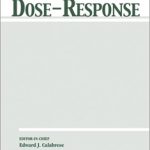Anti-oxidant Effect of High Dilutions of Arnica montana, Arsenicum Album, and Lachesis Mutus in Microglial Cells in Vitro

Microglial cells play important roles in inflammatory responses. The level of oxidative stress is a well-known marker of inflammation. Homeopathic medicines are often used clinically to alleviate inflammation. We evaluated the anti-oxidative effect of high dilutions of Arnica montana (Arnica m.), Arsenicum album (Arsenicum a.), and Lachesis mutus (Lachesis m.) on production of reactive oxygen species (ROS) in inflamed microglial cells in vitro. Microglial cells, on exposure to lipopolysaccharide (LPS), have induced production of ROS compared with resting cells. The dilutions significantly reduced the oxidative stress by decreasing the level of ROS produced. Arnica m. 1C, 3C, 5C, 7C, 9C, and 30C dilutions had a range of ROS reduction between 15 and 42.1%; Arsenicum a. 3C, 5C, 7C, 15C, and 30C dilutions had a range of ROS reduction between 17.6 and 35.3%; and Lachesis m. 3C, 5C, 7C, 9C, 15C, and 30C dilutions had a range of ROS reduction between 25 and 41.7%. To summarize, the dilutions with the greatest effect were Arnica m. 1C (42.1%), Arsenicum a. 30C (35.3%), and Lachesis m. 7C (41.7%). Arnica m., Arsenicum a., and Lachesis m. did not have the same effect on ROS production and were not dose-dependent.







Lascia un commento
Devi essere connesso per inviare un commento.